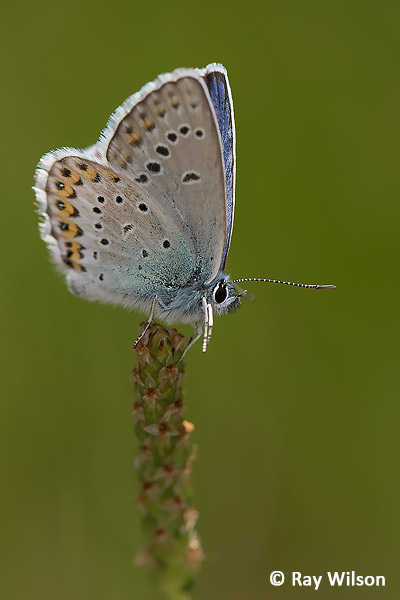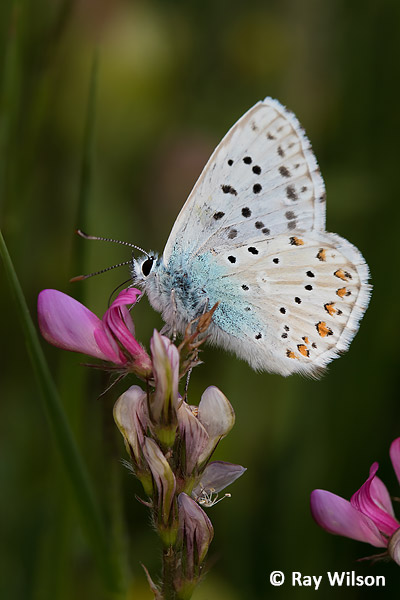
- Home
- Photography Tours
- Diary / Blog
- Galleries
- Foreign Trips
- Tasmania 2016
- NE Queensland 2016
- Western Alps 2016
- NE Spain 2016
- Australia's Wet Tropics 2015
- Australia's Top End 2015
- SW Australia 2015
- Switzerland 2015
- Andalucia 2015
- Belize 2015
- Australia 2014
- Switzerland 2014
- Belize 2014
- Bahama Islands 2014
- Switzerland 2013
- Ecuador 2012-2013
- Florida 2011-2012
- Vancouver Island 2011
- Australia 2010
- Peru 2008
- Bulgaria 2007
- Lesvos 2006
- California 2006
- New Zealand 2005
- Extremadura 2005
- Goa, India 2004
- The Gambia 2003
- About
June/July 2016
Western Alps : Part 2
Butterflies : Blues (Lycaenidae)
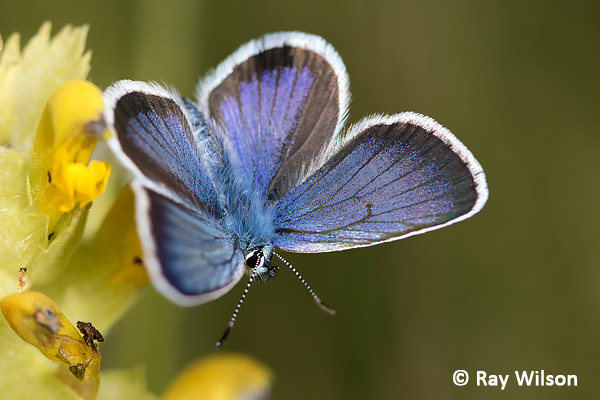
Idas Blue (Plebejus idas)
The Blues have the highest diversity of any butterfly group in the Western Alps with around 50 species occurring.
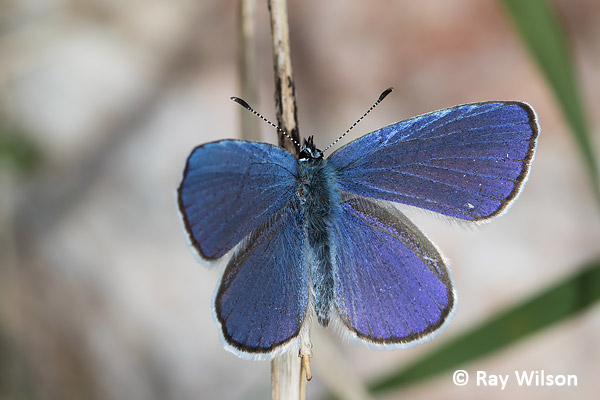
male Mazarine Blue (Cyaniris semiargus)
Most of the blues are fairly similar and can be tricky to identify, although just a handful of species will make up around 80-90% of the individuals you encounter. Once you are familiar with these, spotting the scarcer species becomes a lot easier.

female Mazarine Blue (Cyaniris semiargus)
One way to simplify the identification of the blues is to separate them into groups based on their underwing pattern. For example, three of the basic groups that I break them down to are based on their underwing markings, i.e. no orange lunules present; orange lunules present; blue-centred spots present.
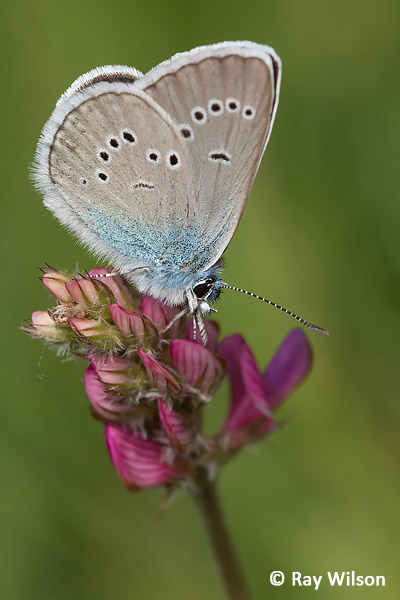
Mazarine Blue (Cyaniris semiargus) |
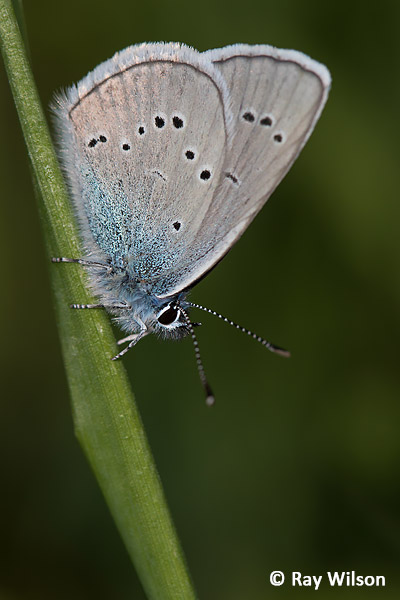
Mazarine Blue (Cyaniris semiargus) |
Two common members of the group with no orange lunules on their undersides are Mazarine Blue and Small Blue (also called Little Blue in some books). Although superficially reasonably similar in photographs, in real life they are easily separated by their size.
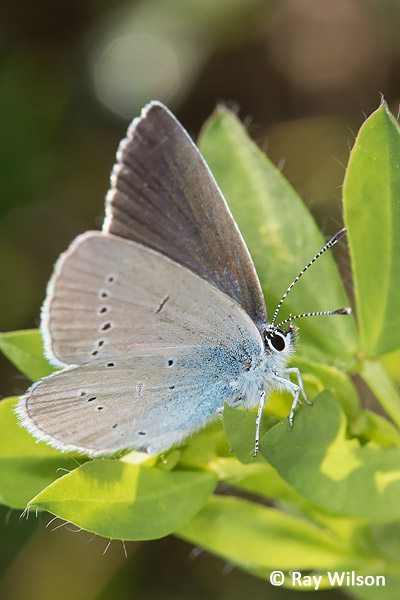
Small Blue (Cupido minimus) |
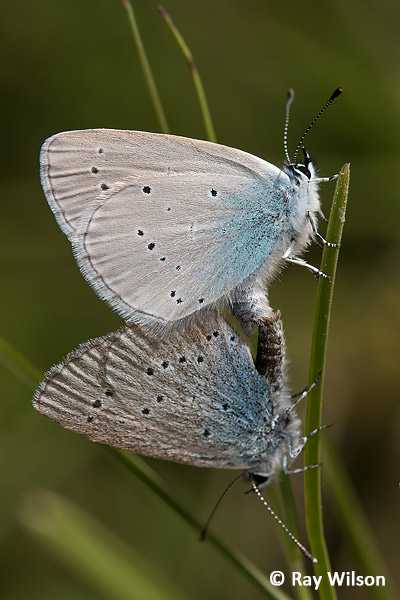
copulating Small Blues (Cupido minimus) |
Osiris Blue is very similar to Small Blue but is differentiated by its forewing spots being in a straight line and the violet-blue upperwing of the male.
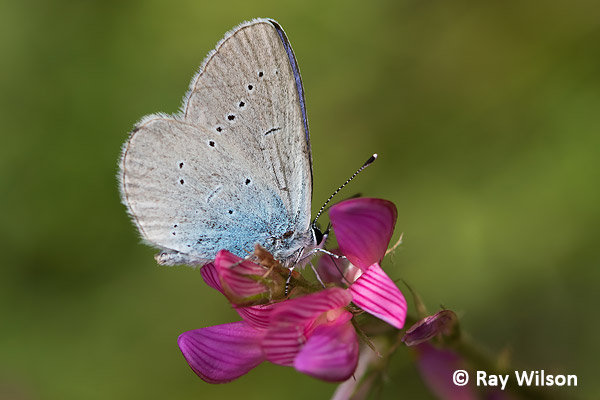
Osiris Blue (Cupido osiris)
At the other end of the size spectrum there is the Large Blue whose wingspan is around twice that of Small Blue.
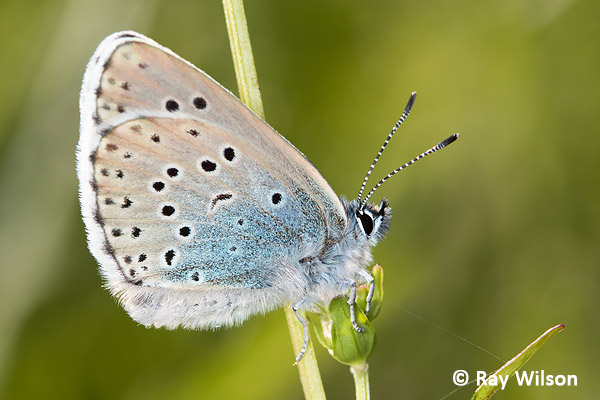
Large Blue (Phengaris arion)
One of the hardest identification challenges among the blues occurs in the group containing blue-centred spots on their underwings. Silver-studded Blue and Idas Blue are virtually identical and variation within each species makes it is impossible to confidently identify them to species unless a close view of the foreleg can be obtained. Here the only consistant difference between the two species can be found: a spine on the tarsus of the foreleg which is present on Silver-studded Blue but absent on Idas Blue. It is highly unlikely that you will ever see this feature in the field with the naked eye, but it can be observed in high quality photographs or with a hand lens if the insect is captured. Both species are abundant and widely distributed and it is not unusual to see 30-50 individuals gathered together on damp tracks or the muddy edges of mountain streams.
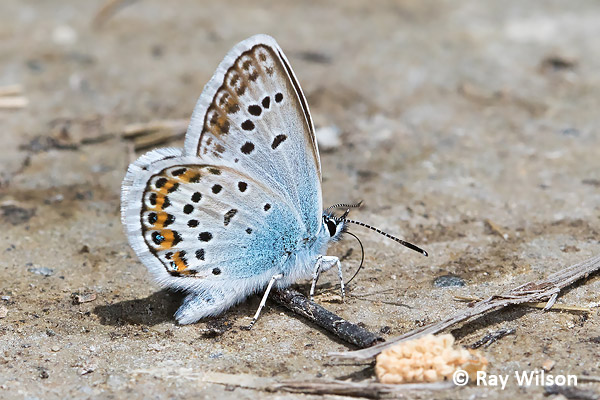
Silver-studded Blue (Plebejus argus)
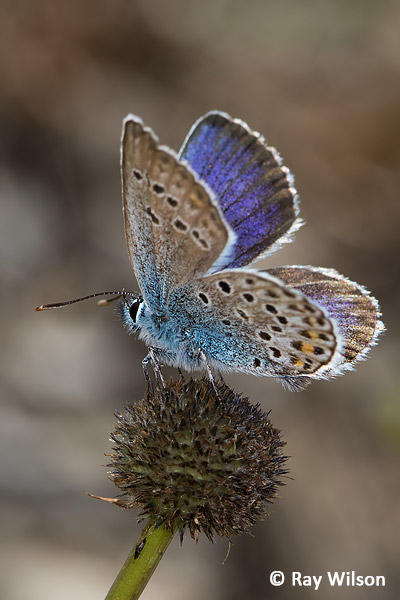
Idas Blue (Plebejus idas) - a particularly vivid blue individual |
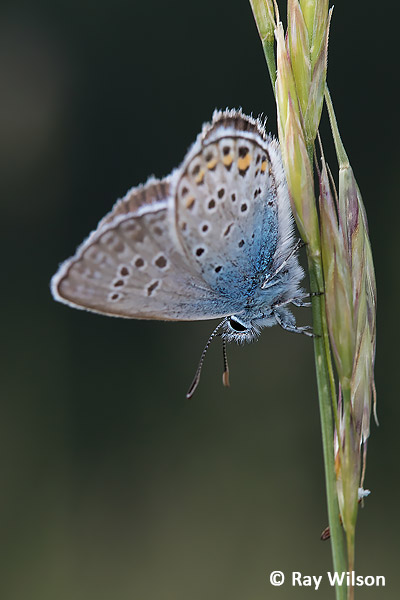
Idas Blue (Plebejus idas) |
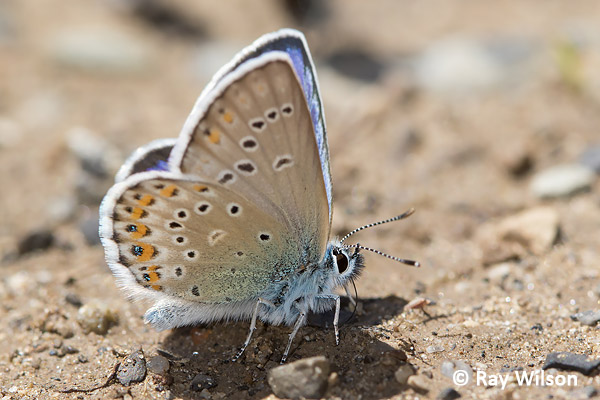
Silver-studded Blue (Plebejus argus)
Geranium Argus (below right) has a distinctive white streak on the underside of the hindwing that makes identification straightforward. It is almost always found on, or at least very close to, its larval foodplants (Geranium spp.) so if you are looking for this species within its range, check out any patch of cranesbill you come across and you will almost certainly eventually find a colony.
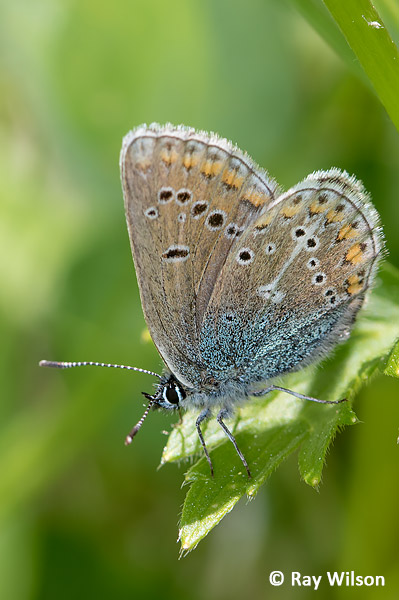
Geranium Argus (Aricia eumedon) |
I am not 100% certain, but I am pretty sure the butterfly shown below is an aberrant Common Blue. No species of European Lycaenid normally has a forewing pattern containing such distinctive black streaks but if the long streaks on the forewing are ignored and counted as discreet spots, the pattern of spots on the underwing is consistant with Common Blue.
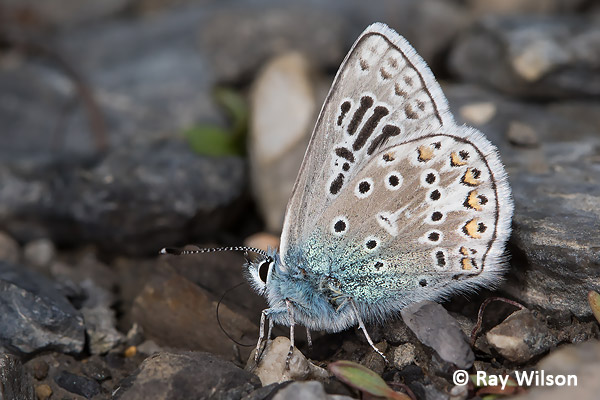
aberrant Common Blue (Polyommatus icarus)
Both Common Blue and Adonis Blue are two common and widespread species that have fairly similar underwing patterns, but can be easily separated by the presence of checkering on the wing margin of Adonis Blue. The males also have noticeably different shades of blue on their upperwings.
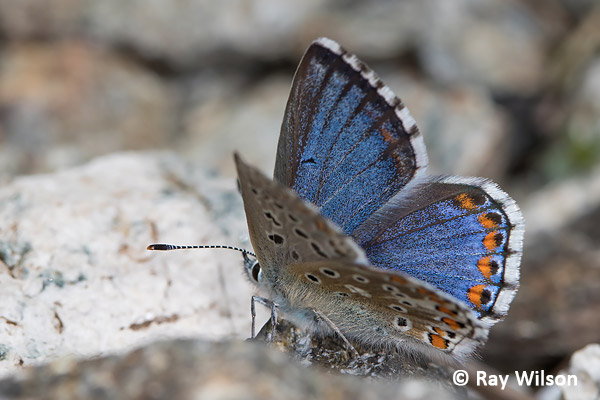
female Adonis Blue (Polyommatus bellargus)
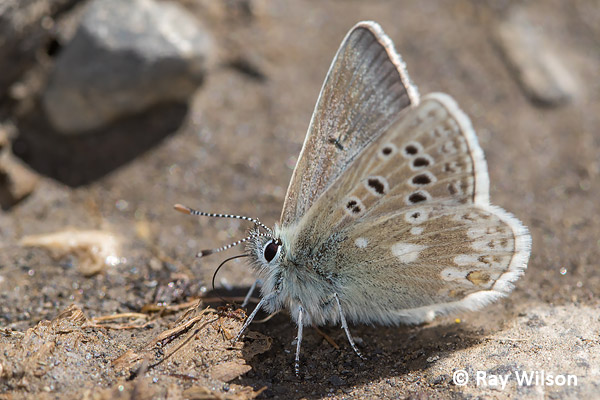
Glandon Blue (Plebejus glandon)
Glandon Blue with its very distinctive underwing pattern and pale silvery blue upperwing is one of the easiest to identify blues but, being high altitude specialists, you have to climb to altitudes above 1800m to find them.
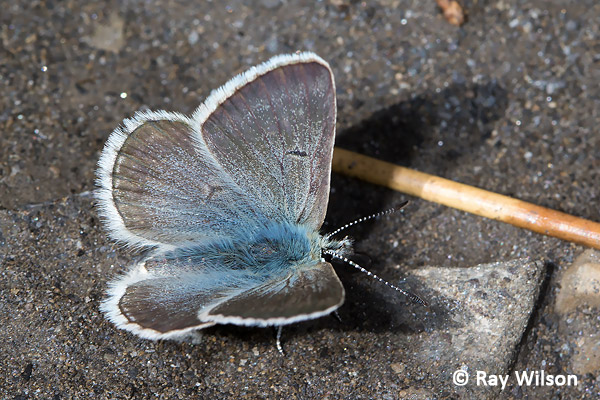
Glandon Blue (Plebejus glandon)
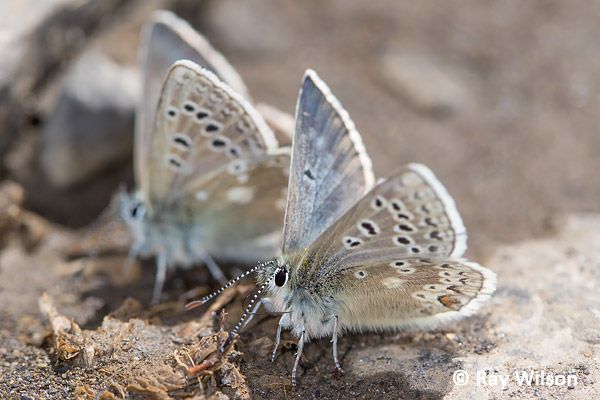
Glandon Blue (Plebejus glandon)
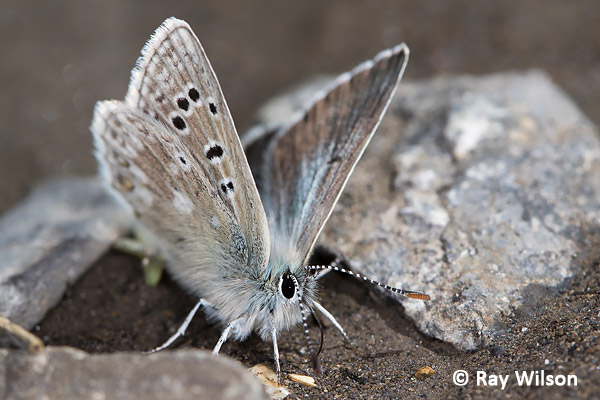
Glandon Blue (Plebejus glandon)
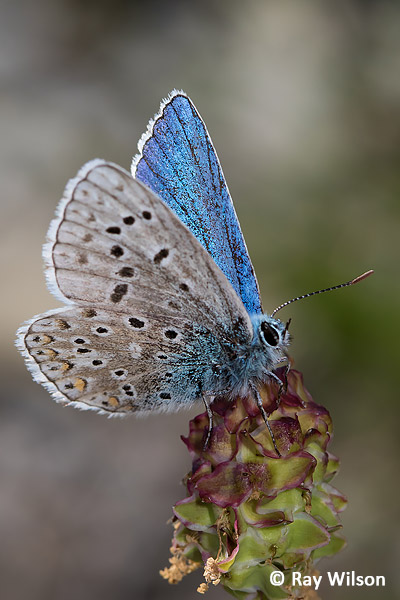
Common Blue (Polyommatus icarus) |
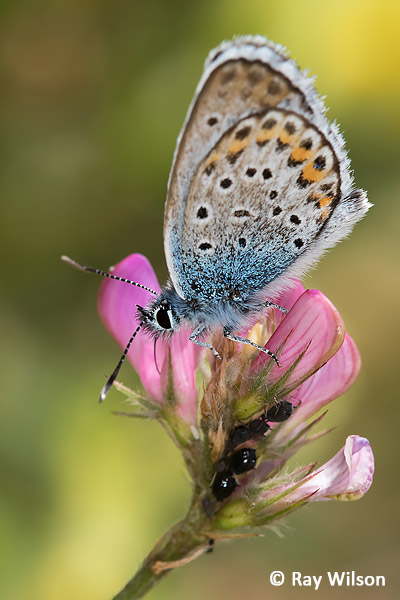
Idas Blue (Plebejus idas) |
If you are familiar with the Common Blue, Chapman's Blues are fairly straightforward to identify. Basically they are Common Blues without the cell spot on the underside of the forewing. However, it should be born in mind that the occasional Common Blue also lacks the cell spot...
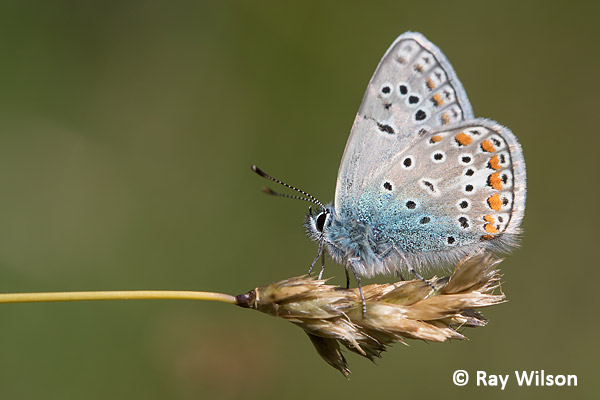
Chapman's Blue (Polyommatus thersites)
Despite its name, the beautiful Scarce Copper (below right) is the most abundant copper throughout the region.
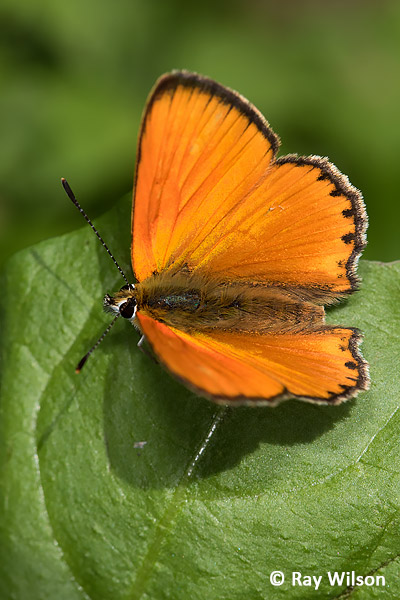
Scarce Copper (Lycaena virgaureae) |
The Alpine subspecies of Sooty Copper lacks the orange markings on the upperwing that are usually present in individuals found elsewhere in Europe.
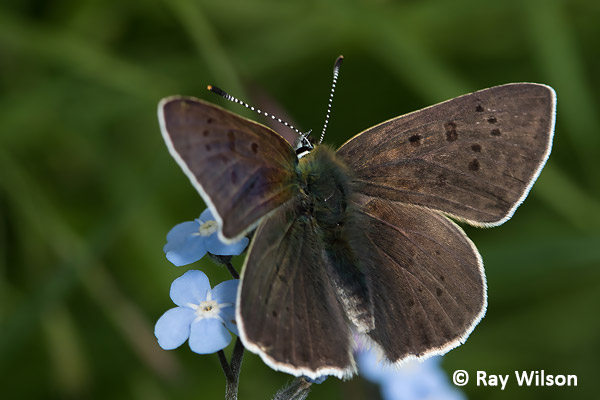
Sooty Copper (Lycaena tityrus subalpinus)
The blue spot and "tails" on the hindwing of Blue-spot Hairstreak give the appearance of a false head and act as a decoy for potential predators. By sacrificing potential damage to its wings the butterfly can often effect an escape if its false head is targeted.
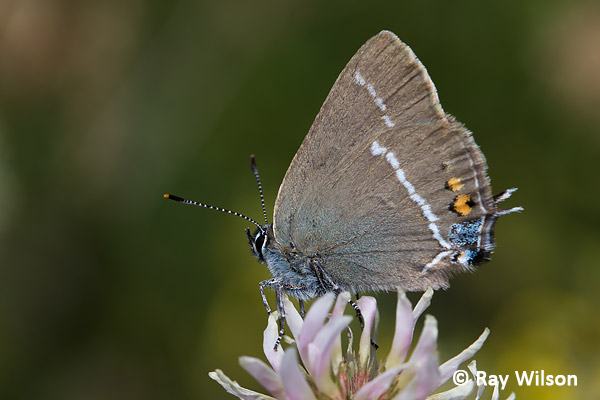
Blue-spot Hairstreak (Satyrium spini)
Ray Wilson owns the copyright of all images on this site.
They may not be used or copied in any form without prior written permission.
raywilsonphotography@googlemail.com
